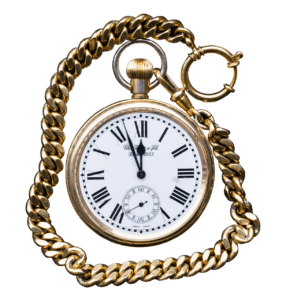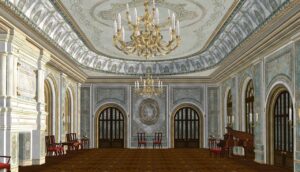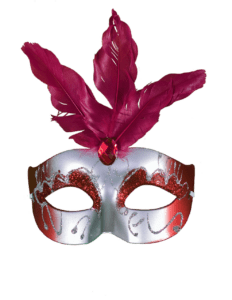Happy New Year! 
Thank you to everyone who stopped by the blog last week to read my first post on the festive season in Regency England. Today, I’m back with part two, focusing on New Year’s and Twelfth Night. I hope you enjoy!
(And if you were too busy celebrating last week, you can find the post on Christmas and Boxing day HERE).
 New Year’s Eve and New Year’s Day in Regency England were less elaborate than Christmas but still held significance as times of reflection, goodwill, and modest celebration. Social connections, charitable acts, and hopes for the future were central themes, with customs varying by region and class.
New Year’s Eve and New Year’s Day in Regency England were less elaborate than Christmas but still held significance as times of reflection, goodwill, and modest celebration. Social connections, charitable acts, and hopes for the future were central themes, with customs varying by region and class.
On New Year’s Eve, families and close friends often gathered for small parties or dinners to bid farewell to the old year and welcome the new. For the upper classes, there might be informal dancing, games, or music, though these were not as elaborate as Christmas or Twelfth Night balls.
 A common tradition was to raise a glass in a toast to the health and prosperity of family and friends, and people usually took this time to reflect on the events of the past year and to express their hopes for the year ahead. At midnight, church bells often rang to mark the transition from one year to the next, and households might light candles or make noises to ward off evil spirits and welcome good fortune.
A common tradition was to raise a glass in a toast to the health and prosperity of family and friends, and people usually took this time to reflect on the events of the past year and to express their hopes for the year ahead. At midnight, church bells often rang to mark the transition from one year to the next, and households might light candles or make noises to ward off evil spirits and welcome good fortune.
Although the idea of New Year’s resolutions was not as formalized as it is today, people still viewed the new year as a chance for self-improvement and fresh starts. Superstitions about luck and prosperity for the coming year shaped many customs. For example, in Scotland and northern England, “first-footing” was practiced. This custom involved the first person to enter a home after midnight bringing good luck for the new year. The “first footer” was ideally a dark-haired man, who brought symbolic gifts such as coal (for warmth), bread (for sustenance), and whisky (for cheer).
 New Year’s Day was a time for visiting neighbors and extended family to exchange good wishes for the year ahead. Many people attended church to mark the start of the new year with prayers and blessings. Meals were often more subdued than the lavish Christmas Day feast but still celebratory. Roast meats, pies, and puddings were common. For wealthier households, New Year’s Day might also feature wines and imported delicacies.
New Year’s Day was a time for visiting neighbors and extended family to exchange good wishes for the year ahead. Many people attended church to mark the start of the new year with prayers and blessings. Meals were often more subdued than the lavish Christmas Day feast but still celebratory. Roast meats, pies, and puddings were common. For wealthier households, New Year’s Day might also feature wines and imported delicacies.
While not as central as at Christmas, some families also exchanged small gifts, particularly to children, servants, and the poor, and visits were often accompanied by small gifts or tokens of goodwill. Acts of charity, such as giving money or food to the less fortunate, were common and reflected the values of the season.
Twelfth Night, celebrated on the evening of January 5th, was one of the most festive and lively occasions in Regency England, marking the culmination of the Christmas season. It was a time for revelry, games, music, and theatrical merriment, drawing on both medieval and early modern traditions.

The upper classes often hosted elaborate Twelfth Night balls in their homes or at local assembly rooms. These gatherings often included masquerades, with guests wearing costumes or masks, adding a sense of playfulness and intrigue. Dancing was a key feature, with popular Regency dances such as the cotillion or country dances performed throughout the evening.
The centerpiece of the celebration was the Twelfth Night cake, a rich and ornate fruitcake decorated with sugar and icing. Traditionally, a bean and sometimes a pea were baked into the cake. The person who found the bean became the King of the Bean, and the person with the pea was the Queen for the evening. These roles, often humorous or whimsical, involved leading the night’s festivities and adding an air of lightheartedness.
Twelfth Night was associated with topsy-turvy customs, echoing older traditions of role reversal and jest. Servants might playfully mimic their masters, and everyone indulged in playful antics. Popular parlor games like charades, snapdragon (plucking raisins from flaming brandy), or cards were common.
Dramatic performances or recitations were a staple of Twelfth Night parties. Shakespeare’s comedy Twelfth Night, with its themes of mistaken identities and festivity, was particularly appropriate for the occasion and might be staged or read aloud.
Feasting and drinking were also common practices. The Twelfth Night feast typically featured an array of seasonal dishes, including roast meats, pies, and desserts like puddings and custards. Wassail (a spiced cider or ale punch) was served, along with other festive beverages like mulled wine or brandy.
Merriment was also not restricted to any one particular class. While the upper classes enjoyed grand balls, the middle and lower classes celebrated with simpler gatherings, communal feasts, and merrymaking at inns or public houses. In rural areas, community celebrations often centered on local customs, such as wassailing fruit trees to ensure a good harvest.
For devout Christians, Twelfth Night marked the eve of Epiphany (January 6th), commemorating the visit of the Magi to the Christ Child. Some families attended church services on Twelfth Night or Epiphany morning to conclude the Christmas season.
Twelfth Night was also considered the proper time to remove Christmas decorations, especially greenery, to avoid bad luck. Leaving decorations up beyond this date was thought to invite misfortune.

Overall, Twelfth Night in Regency England was a lively and joyous occasion, blending formal balls and feasting with playful games and role reversals. It was a time to bid farewell to the festive season with laughter, music, and community spirit. Whether in grand houses or humble villages, it brought people together to celebrate the turning of the year with merriment and goodwill.
Thanks so much for reading! Wishing you and your families a year filled with peace, prosperity, and joy.
Until next time.
JA

1 comments
Happy New Year, Jennifer! Reading about these many winter holidays reminds me of the importance of finding community and celebrating light during these darkest days of the year. If I feel the weight of dark winter days in the electrified New England, I’m sure people in Regency England felt it! Have a wonderful start to 2025! (Wow, we’re at the halfway point in the 2020s…definitely futuristic sounding to me!)